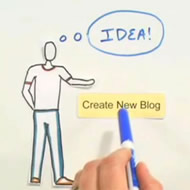A web designer’s guide for adhering to ideal web design process
Irrespective of what kind of website you design and apps you use, it is imperative to adhere to a web design process for creating and modifying client websites. Without a well planned web design and development procedure, you cannot expect to give your sites that much required edge over rivals.
So, what exactly is a web design process? It denotes a well crafted method consisting of logical planning, design, development aided by a detailed documentation of the proceeding for making websites. By adhering to a meticulously devised web design process, a web design professional can churn out professional and feature rich websites in scheduled time. This enhances his or her professional image and contributes a lot to career growth. Even if you are a freelancer web development professional, it is absolutely essential to resort to a well crafted web design and development routine. To attain the objective, you can divide the entire process in some well defined steps.

First step: meticulous planning
You cannot proceed successfully in professional website design unless you do the planning carefully. Before delving into actual work, you need to perform a requirement analysis for developing a particular website. This may require a few interaction and brainstorming sessions with clients. An initial site map also needs to be set up during this part of work. As a web designer, you need to explain the expenses to the client apart from clarifying the design basics. This will help in avoiding conflicts and possibilities of misunderstanding later. Depending on type of site and target audience, a web design professional also needs to pick necessary software, frameworks and other resources.
Second step: implementing design part

In this phase, a web designer needs to start building the web pages and equip them with all necessary elements. Linking the pages and developing site structure also takes place during this time. You may need to use design apps like Photoshop to make mock ups at this phase. If the basics are approved by the client, it is time to complete necessary HTML and XML coding. As a matter of fact, this can be quite time consuming and cycles of editing and modification can take place, to ensure the end product is what the client desires.
Next: site development

Once the basic site design and HTML coding is done, it is time to move on to server side scripting and development. This is when web programming veterans have to do their bit. Like decorating a baked cake with frosting, developers equip the website with interactive elements and test them extensively before publishing can take place. If there are elements like forms in a website, validation needs to be tested thoroughly at this stage. Developers should not forget to monitor content loading in the website and ensure everything from alignment to rendering is in shape. At the end, the website needs to be reviewed to see each and every feature is working as desired. Apart from manual testing, evaluating the site with specific code validation apps and bug checking apps becomes necessary to iron out any hiccups.
Testing and publishing

Once site design and development reaches completion in a web design process, the website should be prepared for publishing. Needless to say, prior to publishing the site, re-checking of code, interactivity and linking becomes mandatory. If the website is linked to a database, that needs to be tested as well. Before the website gets published and it is moved to live server, developers need to perform a cross browser check. It is important to remember a lot of web users are still using outdated browsers in their computers.
After publishing
As a web design professional, be aware that after extensively checking and publishing a website, the web design process does not necessarily reach an end. When the client is happy with the completed and published website, you need to hand him over required source files and documentation. This can be necessary if the client has not opted for an AMC with you or your web design firm. The documentation will help the client if he needs to make modification to the site at a later stage and appoints some other web developer.
Process documentation: small details matter.
It is important that you document the entire web design process from start to end for your benefit and aiding future projects that will come your way. You can use simple word processing apps for this documentation. However, it is prudent that you use apps made specifically for this purpose, such as MS Visio. These apps let you use elements like diagrams and icons more extensively. Once you have completed web design process documentation in your possession, it will make developing subsequent websites much easier for you.





